Indoor plants are no longer just greenery—they’re a statement of style, a source of relaxation, and a way to bring nature indoors. But simply placing a few potted plants on shelves or windowsills doesn’t create the visual impact many plant lovers desire. That’s where layered indoor plant arrangements come in. Layering plants transforms a collection of greens into a cohesive, dynamic display that adds depth, texture, and life to any space.
In this article, we’ll explore how to create a layered indoor plant arrangement, covering plant selection, positioning, layering techniques, lighting considerations, and styling tips to help you craft a stunning indoor jungle.
1. Understanding the Concept of Layering in Indoor Plant Design
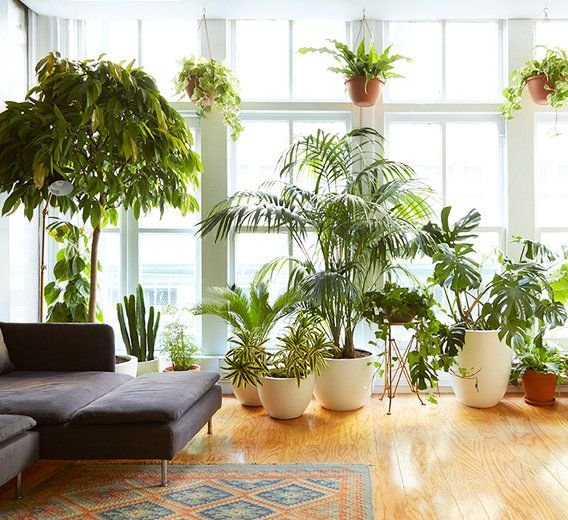
Layering in plant design means arranging plants at different heights, sizes, and textures to create a visually balanced composition. Rather than having all plants at eye level or on the floor, layering incorporates:
- Vertical layers: Using tall plants, mid-sized plants, and low-growing plants.
- Textural layers: Mixing plants with different leaf shapes, colors, and textures.
- Spatial layers: Using shelves, stands, hanging planters, and floor pots to create depth.
The goal is to replicate the feel of nature, where plants grow at different levels, creating a lush, immersive environment. Layered arrangements are not only visually pleasing—they also allow each plant to receive the appropriate light and air circulation.
2. Choosing the Right Plants for Layered Arrangements
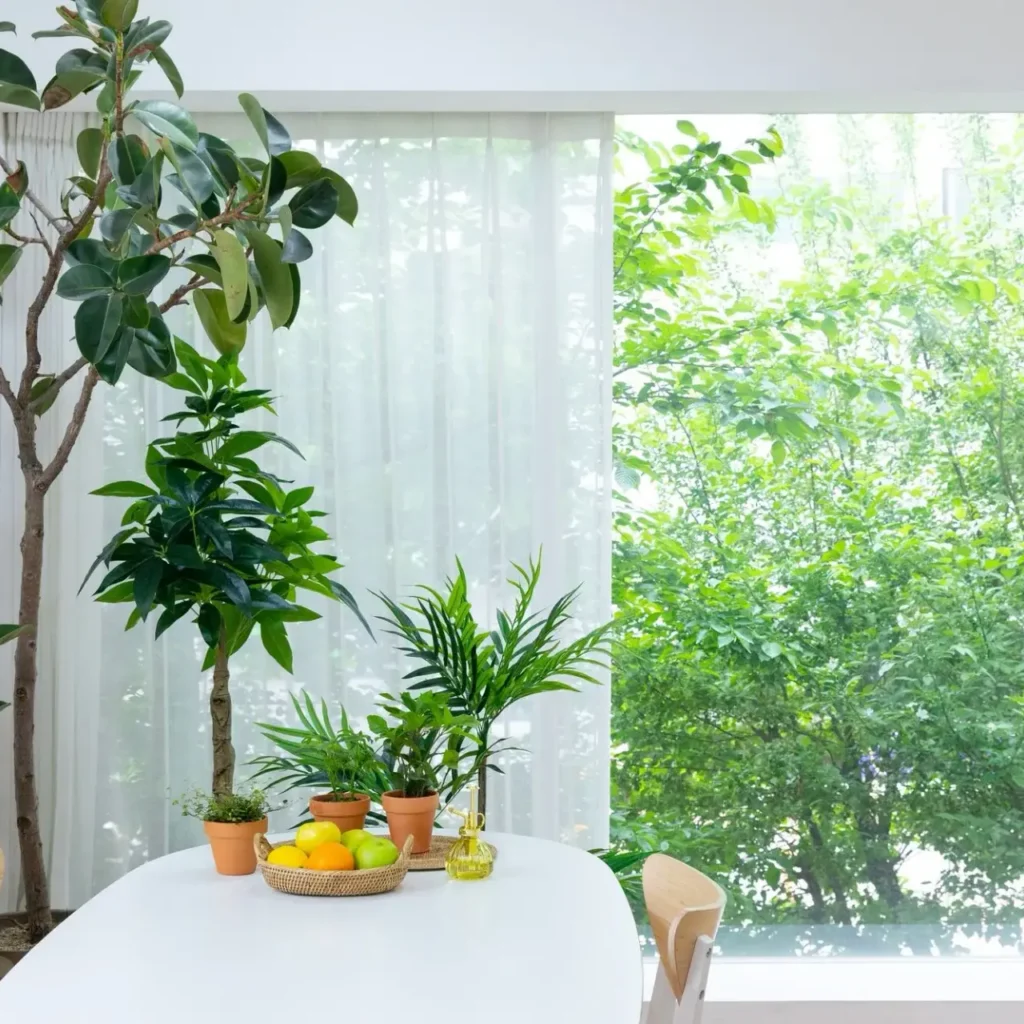
Selecting plants is the first step to a successful layered indoor display. Consider size, shape, foliage texture, and growth habits when creating layers.
a. Tall Plants for the Back Layer
Tall plants form the foundation of your arrangement. They anchor the display and provide a backdrop for smaller plants.
Examples:
- Fiddle Leaf Fig (Ficus lyrata)
- Rubber Plant (Ficus elastica)
- Areca Palm (Dypsis lutescens)
- Monstera Deliciosa
Tip: Place these plants in the farthest part of your arrangement or near walls to create height and structure.
b. Medium Plants for the Middle Layer
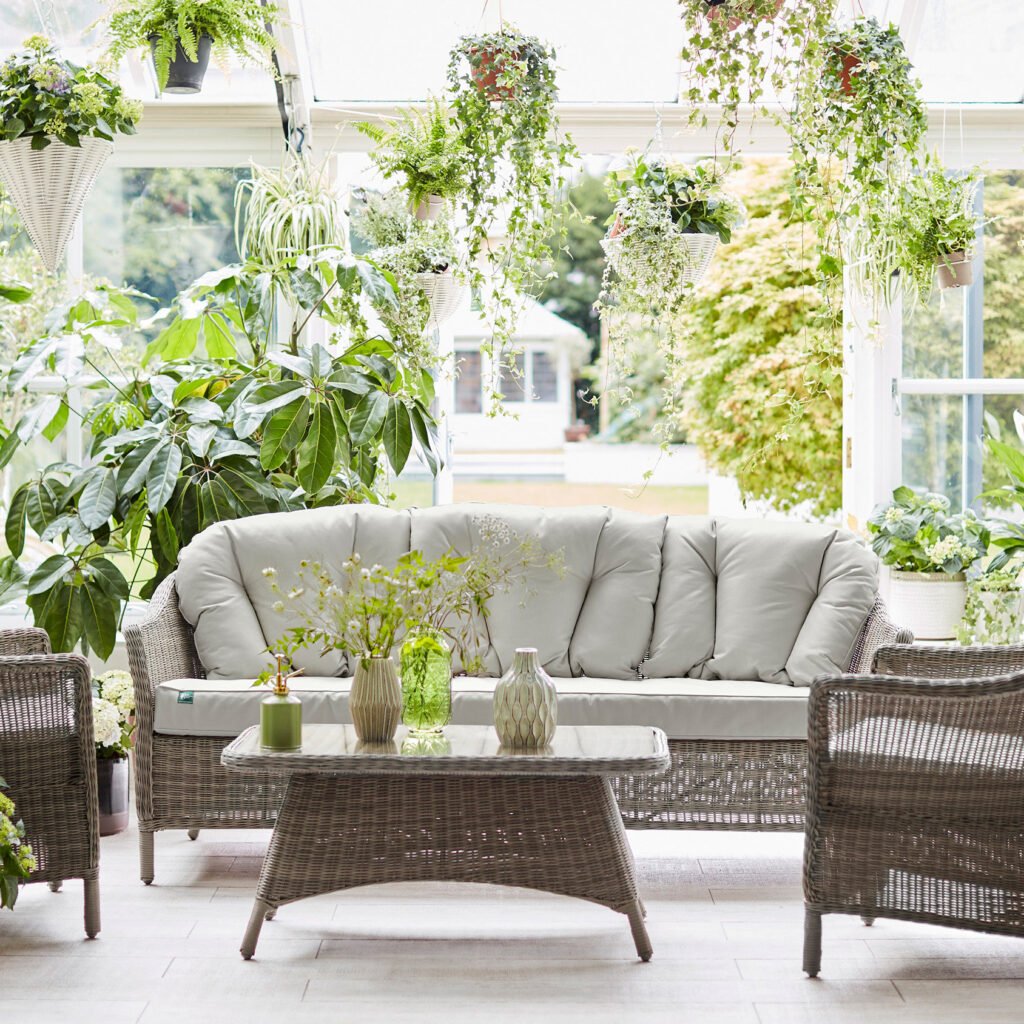
Mid-sized plants bridge the gap between tall and small plants, adding volume and visual interest.
Examples:
- Calathea varieties
- Philodendron species
- Peace Lily (Spathiphyllum)
- Dracaena
Tip: Group several mid-sized plants together to create a sense of lushness, and use varied textures to prevent monotony.
c. Small Plants for the Front Layer
Small plants complete the arrangement and fill in gaps. They add detail and make the arrangement look natural.
Examples:
- Pothos
- Fittonia (Nerve Plant)
- Ferns like Boston Fern
- Succulents or small cacti
Tip: Low-growing trailing plants are perfect for the front layer, cascading slightly over shelves or tables to create depth.
d. Hanging or Air Plants
Hanging plants or air plants create vertical interest and enhance the feeling of layers without taking up floor space.
Examples:
- String of Pearls
- Spider Plant (Chlorophytum comosum)
- Hoya varieties
Tip: Use macramé hangers or wall-mounted planters to add floating layers above your main arrangement.
3. Selecting Planters and Containers
Planters play a key role in layered arrangements—they can emphasize height differences, add color, and create cohesion. Consider the following:
- Size: Choose pots proportional to plant size. Tall plants need sturdy, larger pots, while small plants look better in compact containers.
- Style: Mix textures like terracotta, ceramic, and woven baskets for visual interest.
- Color: Use neutral tones for a minimalist look, or colorful pots to create contrast and vibrancy.
- Consistency: To avoid a cluttered look, try a consistent theme such as matching materials, colors, or shapes.
For layered displays, planter stands, tiered shelves, and plant carts can help elevate smaller plants and create clear visual separation between layers.
4. Arranging Plants by Height and Texture
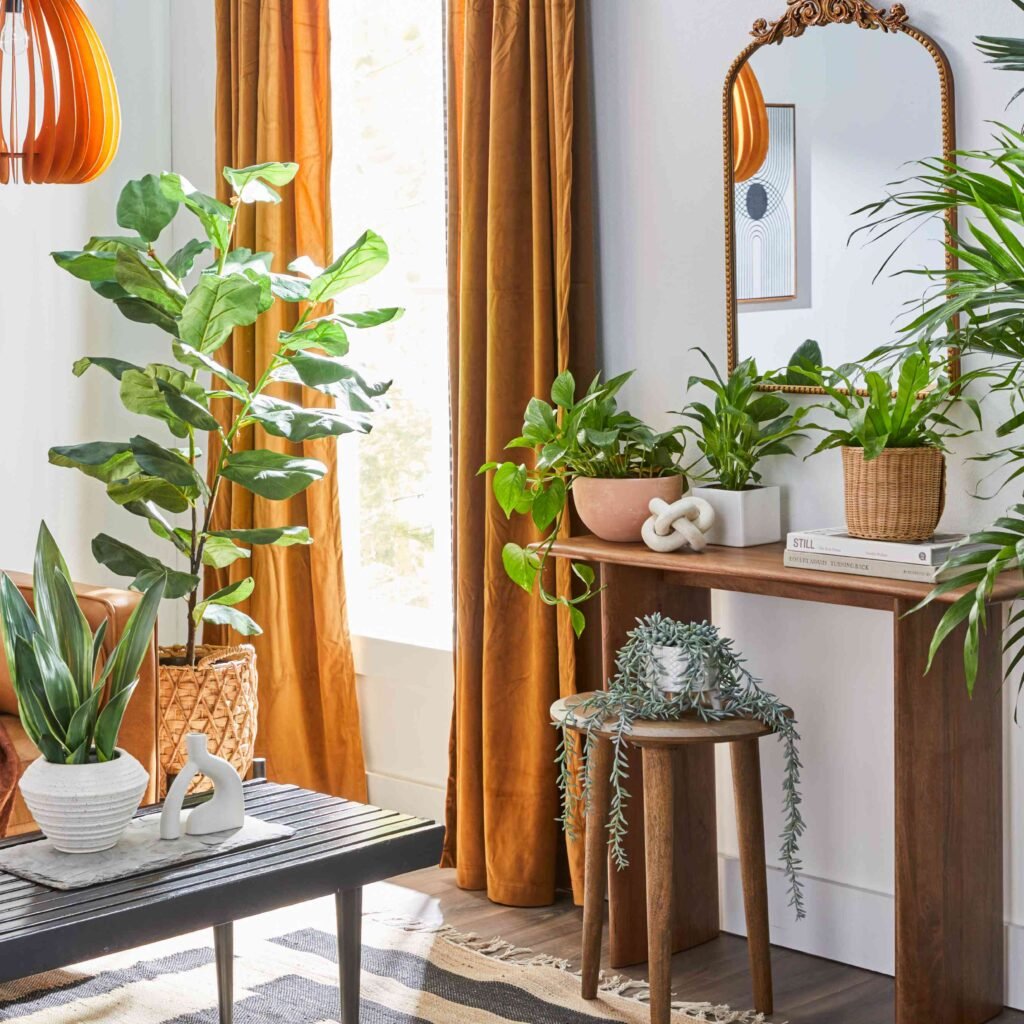
Layered arrangements are more than just placing tall plants in the back and small ones in front. Consider texture, leaf shape, and color for a harmonious display.
- Texture: Combine broad leaves (like Monstera) with fine foliage (like ferns) for contrast.
- Leaf color: Mix dark green, light green, variegated, and even purple foliage for depth.
- Growth habit: Mix upright plants, trailing vines, and cascading species to create movement.
- Balance: Avoid placing all large or bold plants on one side. Distribute visual weight evenly to create balance.
Tip: Use the “triangle rule”—arrange plants in triangular patterns to guide the eye naturally through the display.
5. Optimizing Light for Layered Arrangements
Layering can sometimes create shade for lower plants. To ensure all plants thrive:
- Assess light requirements: Place sun-loving plants where they receive the most natural light, typically near windows.
- Rotate plants: Move mid and low layers periodically to prevent uneven growth.
- Use artificial light: Grow lights can supplement areas with insufficient sunlight, especially for lower layers.
- Avoid overcrowding: Too many plants stacked closely can block airflow and light, causing leggy growth or leaf damage.
Tip: For layered arrangements in low-light areas, prioritize shade-tolerant plants like Pothos, ZZ Plant, or Calathea in lower layers.
6. Creating Depth with Stands, Shelves, and Wall Displays
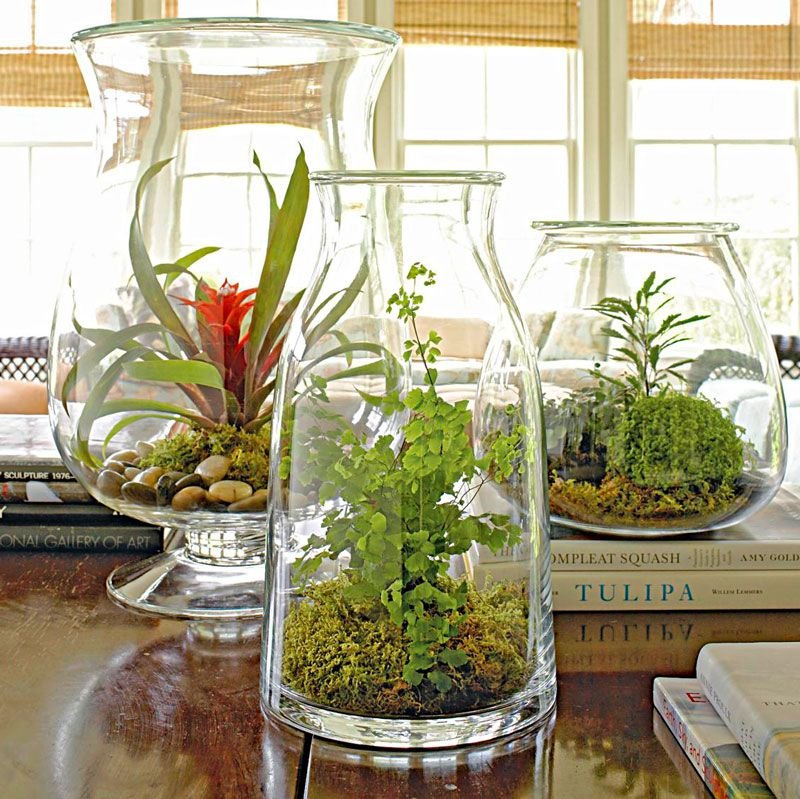
Vertical and spatial layering is achieved with tools beyond plant height:
- Plant stands: Elevate mid-sized plants to form a second tier.
- Tiered shelves: Display multiple layers on a single piece of furniture.
- Hanging planters: Suspend trailing plants above tabletop arrangements.
- Wall-mounted planters: Add vertical interest without consuming floor space.
- Corner arrangements: Place tall plants behind mid-sized and small plants to fill unused corners dynamically.
By combining these elements, you can create a three-dimensional plant display that feels lush and immersive.
7. Using Color, Patterns, and Accessories
Layering isn’t just about plant size; color and style are equally important:
- Leaf color: Mix dark green foliage with variegated leaves to create visual contrast.
- Flowering plants: Introduce seasonal blooms sparingly for pops of color.
- Decorative elements: Incorporate pebbles, moss, or driftwood to enhance the natural aesthetic.
- Pot pattern and color: Use neutral pots to highlight foliage or bold pots for a decorative statement.
Tip: Repeat colors and textures in multiple layers for harmony, while introducing small accents for focal points.
8. Maintenance of Layered Indoor Plant Arrangements
Layered arrangements require regular care to stay vibrant:
- Watering: Adjust watering by plant type and position—top layers may dry faster than lower layers.
- Pruning: Trim trailing and fast-growing plants to maintain balance.
- Cleaning leaves: Dust can accumulate in dense arrangements, reducing photosynthesis. Wipe leaves gently with a damp cloth.
- Repotting: Monitor growth; plants may need larger pots over time.
- Monitoring pests: Dense arrangements can harbor pests; check leaves and stems regularly.
Tip: Keep a care schedule to prevent neglect and ensure each layer thrives.
9. Common Mistakes to Avoid
To ensure your layered arrangement is a success, avoid these pitfalls:
- Overcrowding: Too many plants can block light and airflow.
- Ignoring light needs: Not all plants can thrive in shaded lower layers.
- Uneven watering: Different layers may need different watering schedules.
- Neglecting plant growth habits: Some trailing plants may overtake smaller upright plants if not managed.
- Ignoring pot size: Small pots for large plants can stunt growth; large pots for small plants can lead to overwatering.
By planning ahead and monitoring your arrangement, these mistakes can be avoided.
10. Inspiring Ideas for Layered Indoor Plant Arrangements
- Indoor jungle corner: Combine a tall fiddle leaf fig, mid-sized ferns, and trailing pothos for a lush corner display.
- Tiered shelf garden: Use floating shelves to display small trailing plants at different heights above mid-sized philodendrons.
- Dining table centerpiece: Place a mix of small flowering plants and low-growing ferns in decorative pots with height variation.
- Hanging plant cascade: Suspend string-of-pearls or hoya plants above a group of floor-standing tropical plants for vertical drama.
The possibilities are endless, limited only by your creativity and space.
Conclusion
Creating a layered indoor plant arrangement is both an art and a science. By carefully selecting plants of different heights, textures, and colors, choosing appropriate planters, and strategically arranging them with attention to light and care, you can transform any indoor space into a dynamic, lush, and inviting green oasis.
Layering not only enhances visual appeal but also mimics natural ecosystems, promoting healthier growth and stronger plants. With thoughtful design and maintenance, a layered arrangement becomes more than decoration—it becomes a living, breathing part of your home.
Remember, the key to a successful layered indoor plant display is balance—in height, texture, light, and care. Master that, and your indoor garden will thrive beautifully, captivating every eye that sees it.
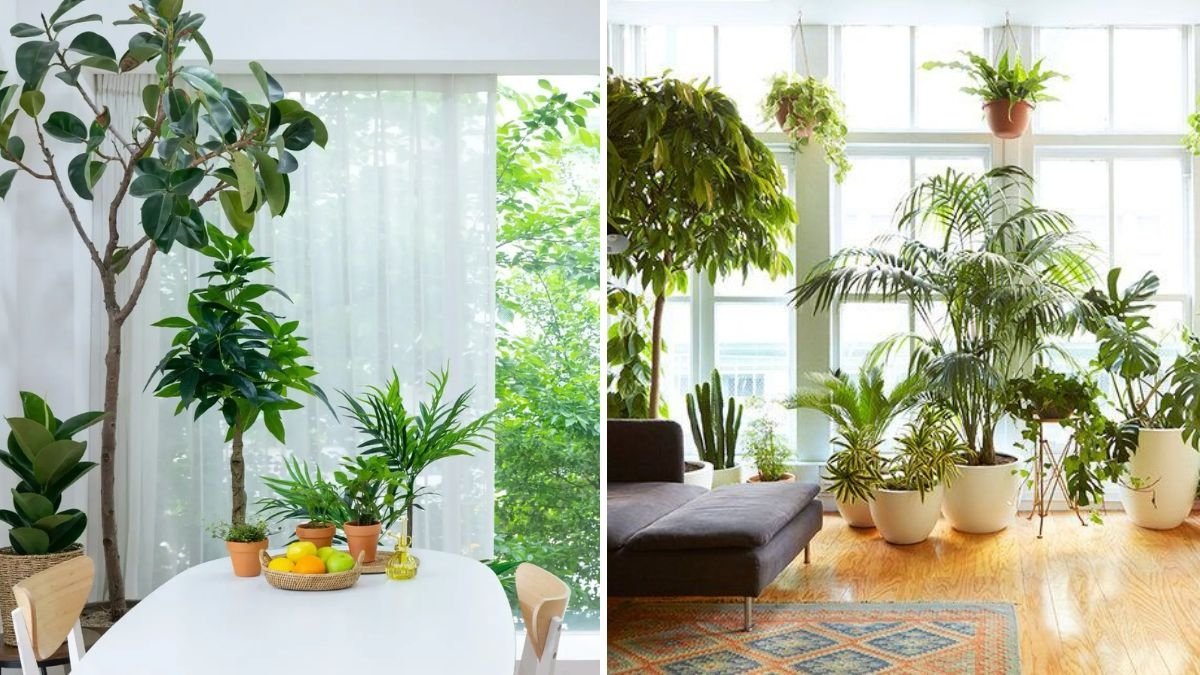




Leave A Comment